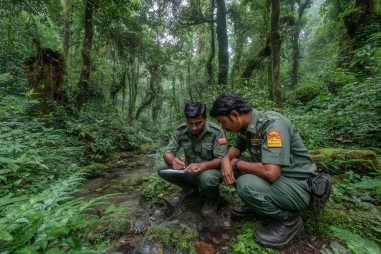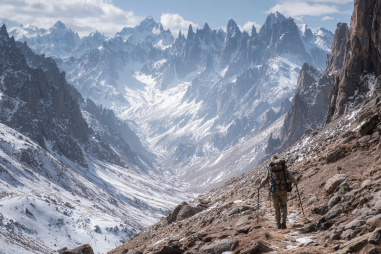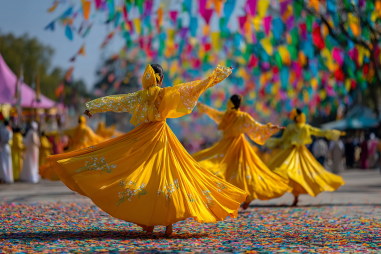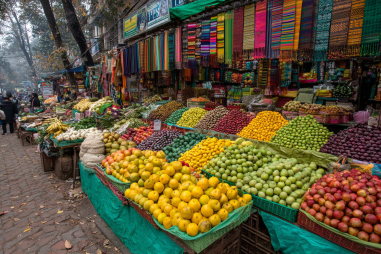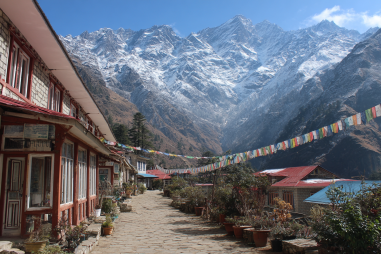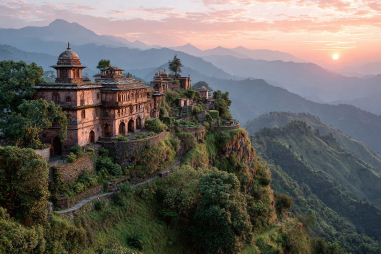Nestled in the heart of Nepal, Gorkha is a treasure trove of history, culture, and natural beauty waiting to be explored. Known as the birthplace of the unifier of Nepal, King Prithvi Narayan Shah, Gorkha offers travelers a unique glimpse into the nation’s past alongside stunning landscapes and vibrant local traditions. Whether you’re a history buff, a trekking enthusiast, or someone eager to immerse yourself in Nepali culture, this travel guide will equip you with all you need to make the most of your visit to this historic gem.
Introduction to Gorkha
Gorkha is a district located in the Gandaki Province of Nepal, perched amidst the rolling hills and mountains that characterize this part of the country. The town itself is relatively small but rich in historical significance, as it was the seat of the Gorkha Kingdom. This kingdom played a pivotal role in the unification of Nepal in the 18th century. Today, Gorkha provides an authentic and less touristy experience compared to the bustling cities like Kathmandu and Pokhara, making it ideal for travelers seeking tranquility paired with cultural depth.
How to Get to Gorkha
Getting to Gorkha can be an adventure in itself, but it’s well worth the journey. The nearest major city is Kathmandu, Nepal’s capital. From Kathmandu, you have a couple of options:
- By Road: You can take a bus or hire a private vehicle from Kathmandu to Gorkha. The road trip typically takes around 6 to 7 hours, depending on traffic and road conditions. The route offers scenic views of hills, rivers, and terraced farms along the way.
- By Air: For quicker access, you can fly from Kathmandu to the nearby Pokhara airport and then take a road trip to Gorkha, which takes approximately 3 to 4 hours. While there isn’t a direct airport in Gorkha itself, this combination saves travel time and can be more comfortable.
Once in Gorkha town, you can easily explore on foot or rent a local taxi for attractions a little further out.
Top Attractions: Gorkha Palace, Temples, and Viewpoints
Gorkha boasts several key attractions that showcase its rich history and natural beauty:
- Gorkha Durbar (Gorkha Palace): This historic palace stands majestically on a hilltop overlooking the town. Built in the 16th century, it was once the royal seat of the Shah kings. Visitors can explore the palace ruins, museums displaying ancient artifacts, and enjoy panoramic views over the valley and surrounding hills. The climb to the palace involves about 500 steps, so be prepared for a bit of a workout!
- Manakamana Temple: Situated nearby, this sacred Hindu temple is dedicated to the Goddess Bhagwati, believed to fulfill devotees’ wishes. Accessible by a scenic cable car ride, it offers breathtaking views of the surrounding mountains and forests.
- Kalika Temple: Another important religious site in Gorkha, Kalika Temple is known for its cultural significance and serene atmosphere. It’s a great spot to witness local worship practices and soak in spiritual vibes.
- Viewpoints: In addition to the palace’s spectacular vista, there are several other viewpoints around Gorkha that afford stunning views of the Himalayas and the terraced farmland below—ideal for photography and peaceful reflections.
Local Culture and Festivals
Gorkha’s cultural fabric is woven with traditional Nepali customs and festivities. The people here predominantly belong to the Gurung and Magar ethnic groups, along with Brahmin and Chhetri communities, each contributing to the rich cultural tapestry.
Festivals are a highlight during any visit to Gorkha. Some notable celebrations include:
- Dasain: The biggest Hindu festival in Nepal, celebrated with family gatherings, rituals, and feasts.
- Tihar: Known as the festival of lights, Tihar honors various animals, siblings, and gods with garlands, lamps, and music.
- Gurung Losar: This is the New Year celebration specific to the Gurung community, featuring traditional dances, music, and feasting.
Engaging in these festivals or witnessing them can offer travelers a deeper understanding of local traditions and hospitality.
Best Time to Visit Gorkha
The ideal time to visit Gorkha largely depends on what you want from your trip:
- Spring (March to May): This season offers pleasant weather, blooming rhododendrons, and clear skies—perfect for trekking and sightseeing.
- Autumn (September to November): Known as the most popular time for travel in Nepal, autumn brings stable weather with crisp air and vibrant festivals, making it excellent for outdoor activities.
- Winter (December to February): Winters can be cold, especially at higher altitudes. However, lower-lying areas in Gorkha may be mild and less crowded.
- Monsoon (June to August): Heavy rain can lead to slippery trails and occasional road disruptions, so it’s generally not recommended for trekking but can be a lush, peaceful time to experience the region’s greenery.
Accommodation and Dining Options
Gorkha offers a range of accommodation catering mostly to budget and mid-range travelers. Here’s what you can expect:
- Guesthouses and Homestays: These are the most common and provide a warm, personal touch with local families. Staying in a homestay offers cultural immersion alongside comfortable lodging.
- Hotels: Small hotels with basic amenities are available in Gorkha town, suitable for travelers seeking convenience.
When it comes to dining, Nepali cuisine dominates with flavorful staples like dal bhat (lentil soup with rice), momo (dumplings), and seasonal vegetables. Local eateries and teahouses serve fresh, home-cooked meals. For a more authentic experience, trying homemade dishes in a village homestay is highly recommended.
Outdoor Activities and Trekking Near Gorkha
For adventure lovers, Gorkha is a fantastic base for trekking and outdoor activities. Some highlights include:
- Gorkha to Manakamana Trek: This gentle trek leads to the Manakamana Temple, passing through local villages and terraced fields.
- Chepe Trail: A lesser-known but rewarding trail that offers stunning views of the Annapurna and Manaslu ranges, along with rich biodiversity.
- Hiking and Nature Walks: There are multiple short hikes and nature walks around the valley, suitable for all fitness levels.
- Bird Watching and Wildlife: The forested hills around Gorkha are home to a variety of bird species and small wildlife, making it an enjoyable spot for nature enthusiasts.
Whether you prefer a leisurely day hike or a multi-day trek, Gorkha’s landscapes offer something for everyone.
Safety and Travel Tips
Traveling to Gorkha is generally safe, but here are some tips to ensure a smooth experience:
- Health Precautions: Carry basic medications and stay hydrated. Altitude sickness is less of a concern here compared to higher Himalayan regions, but be mindful of exertion levels.
- Local Etiquette: Dress modestly and be respectful when visiting temples and interacting with locals. Always ask permission before taking photographs of people.
- Road Conditions: Roads can be bumpy and narrow; if traveling by bus, prepare for a potentially rough ride.
- Guides and Porters: Hiring a local guide can enrich your travel experience, especially for trekking or cultural tours.
- Cash and Connectivity: ATMs are limited in Gorkha town, so carry sufficient Nepali rupees. Mobile connectivity is decent but may fluctuate in remote spots.
Why Gorkha Should Be on Your Nepal Travel List
If you’re seeking an off-the-beaten-path destination that combines history, culture, and natural beauty, Gorkha is a remarkable choice. It offers a window into Nepal’s fascinating past while presenting ample opportunities for adventure and cultural exchange. The warm hospitality of the local people, the scenic landscapes, and the intriguing heritage sites together create an experience that is both enriching and memorable. Whether you’re fascinated by ancient palaces, eager to witness vibrant festivals, or excited to explore peaceful trekking routes, Gorkha has it all—a true hidden gem waiting to be discovered.


